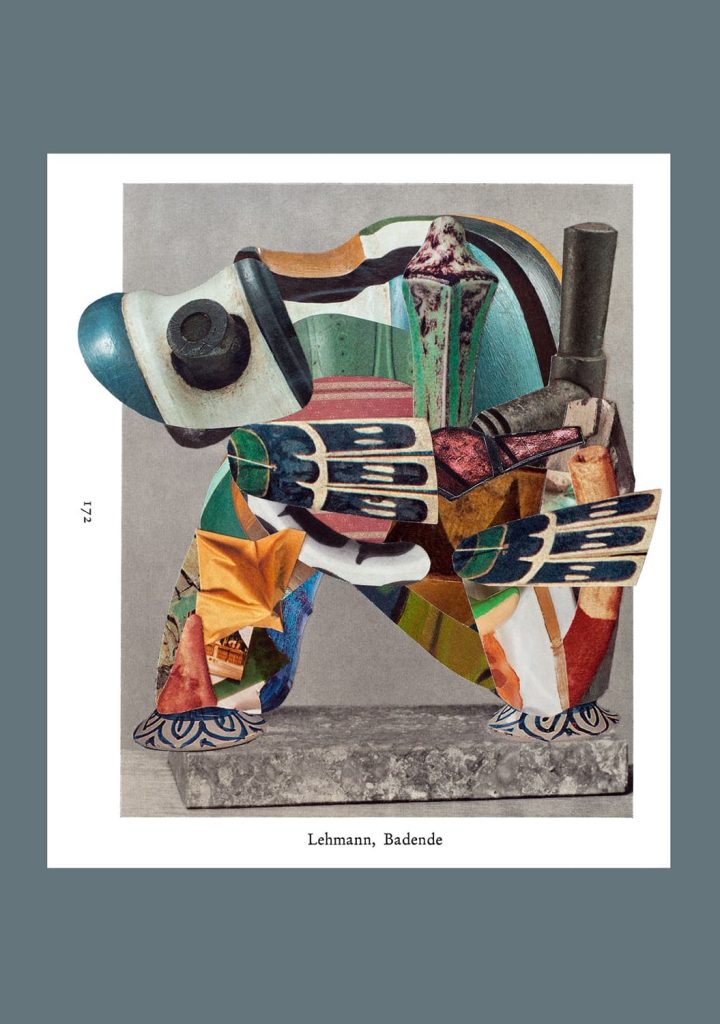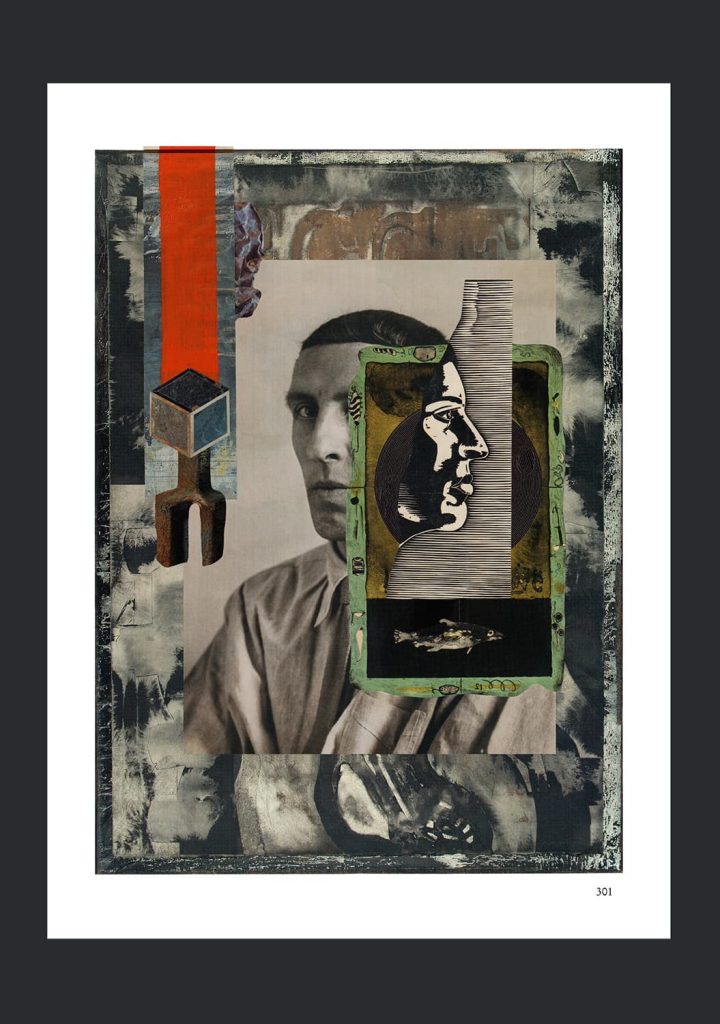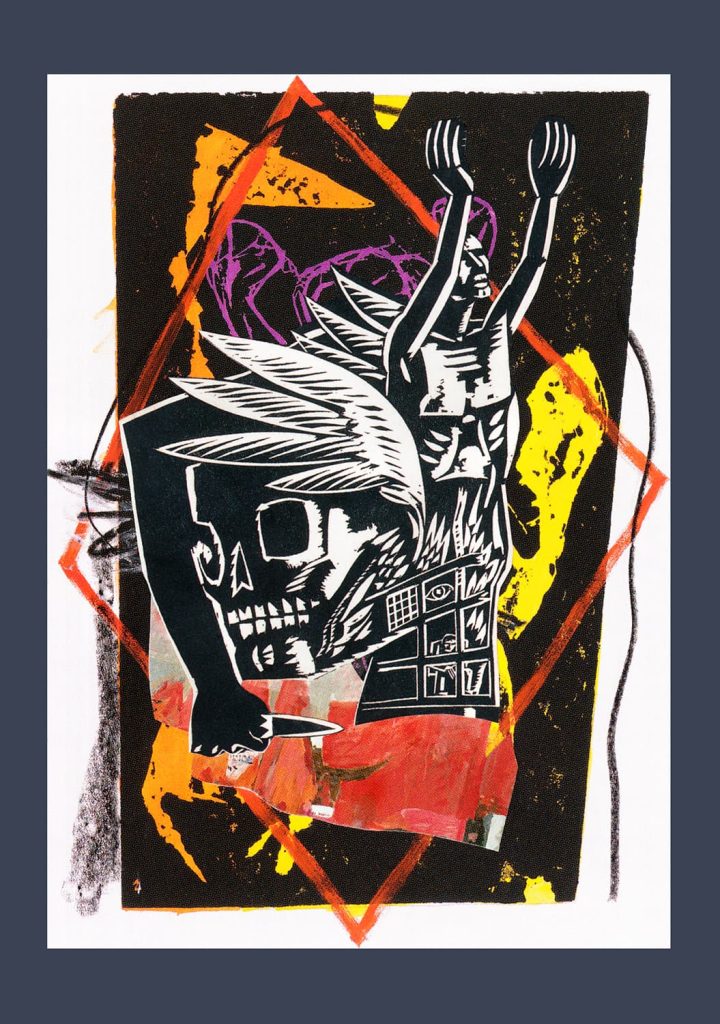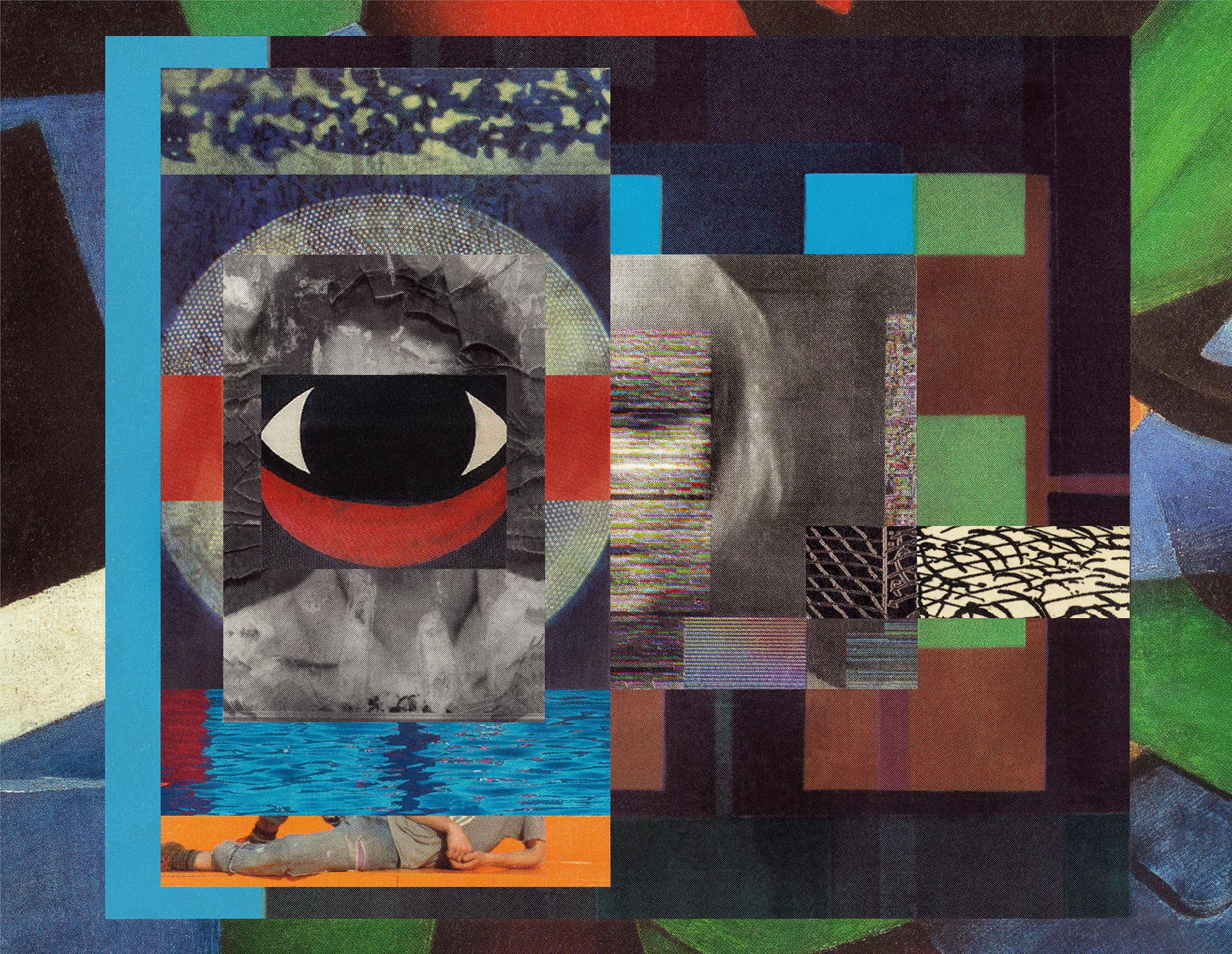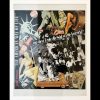TWS –Please tell our readers something about yourself.
Can you explain your “nom de guerre”? Tell us how you became Kodaek 2020?
K – Hi Max…thank you for this opportunity to tell you a little about myself. As a collage artist, I give myself the artist name Kodaek 2020. This pseudonym serves to separate me from my work as a photographer.
This pseudonym serves to separate me from my work as a photographer.
I am from Germany and live near Wiesbaden in a small, idyllic village at the foot of the Feldberg. About ten years ago I completed my diploma in photography and media at the University of Applied Sciences in Bielefeld. Since then I have been working as a photographer in the fields of reportage, documentation, portrait and architectural photography.
With the onset of the Corona pandemic, I had an unexpected amount of free time. Near my home was the studio of an artist friend. I was there very often and started helping him with various tasks in the studio, such as stretching frames, photographing his artworks or subsequently editing them. In return, I was able to look around his extensive library and gather ideas from his art book collection and let him show me various artistic techniques, including, for example, the photo transfer process.
He used this technique to transfer photos from magazines onto canvases and then partially paint over them. I also tried my hand at this technique, but my attempts looked rather modest. It soon became clear to me that dealing with the transfer technique and painting was not one of my strengths.
However, something new had caught my interest. By chance I found some old paper collage works in his studio. Actually, the medium of collage had always been uninteresting to me. I found this art form unfashionable and boring. But these collages of my friend were different from what I had seen before. This moment was the impulse for my further work. I started to cut out and sort everything interesting in my collection of old photo and art magazines. To get feedback on my new work, from then on every new piece was scanned and shared on Instagram the next day.


TWS – How did you go about it technically? And do you still take photos? Have you ever used your own photos for collages?
K –First I tried to create digital collages with scanned images on my computer. At first, this seemed the most obvious thing for me to do, since I already had all the tools on my computer. However, I soon lost interest in it. After so many years, working with the digital camera and digital image processing had become a habit for me and I quickly got bored.
My photography studies had taught me about working with analogue film and developing in the darkroom. I knew instinctively that I needed an analogue counterpart to my digital professional work.
Of course, I still take photographs. It is my profession and it always will be. I love photography too much for that. On top of that, I have no longer been a freelance photographer for almost two years, but work for a large company in a permanent position. Unfortunately, this has a negative effect on my collage work at the moment, as I am much more professionally bound in terms of time.
So far, I haven’t used my own photos for a collage. Somehow I find other people’s material more exciting.
In photography I work in a very structured way and it is a very planned and prepared work. You think about how a photo should look well in advance. When I create collages, a lot happens intuitively and from the gut. For me, it’s a kind of liberation from the mental side photography. There is something meditative about concentrating on cutting out, sorting and searching. At the same time, I can re-evaluate everything I have learned in photography and break out of my own encrusted structures. In collage art, stylistically everything is allowed, I no longer have to pay attention to a photographic visual language. In return, my photographic knowledge helps me to look at and take apart and reform images into a collage.
When I create collages, a lot happens intuitively and from the gut. For me, it’s a kind of liberation from the mental side photography.
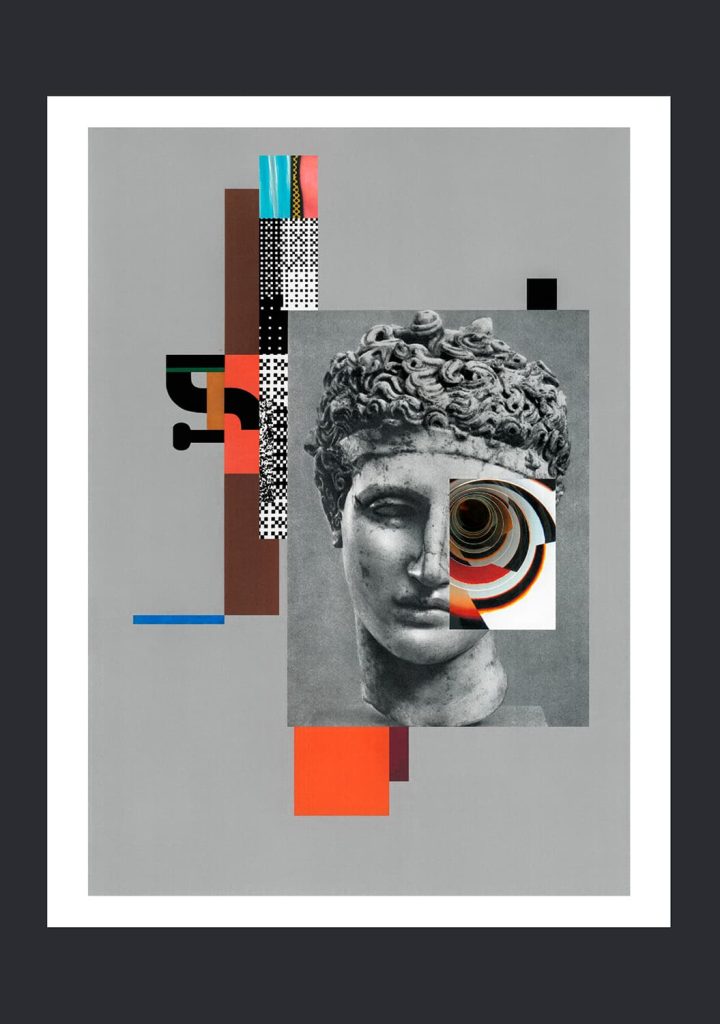
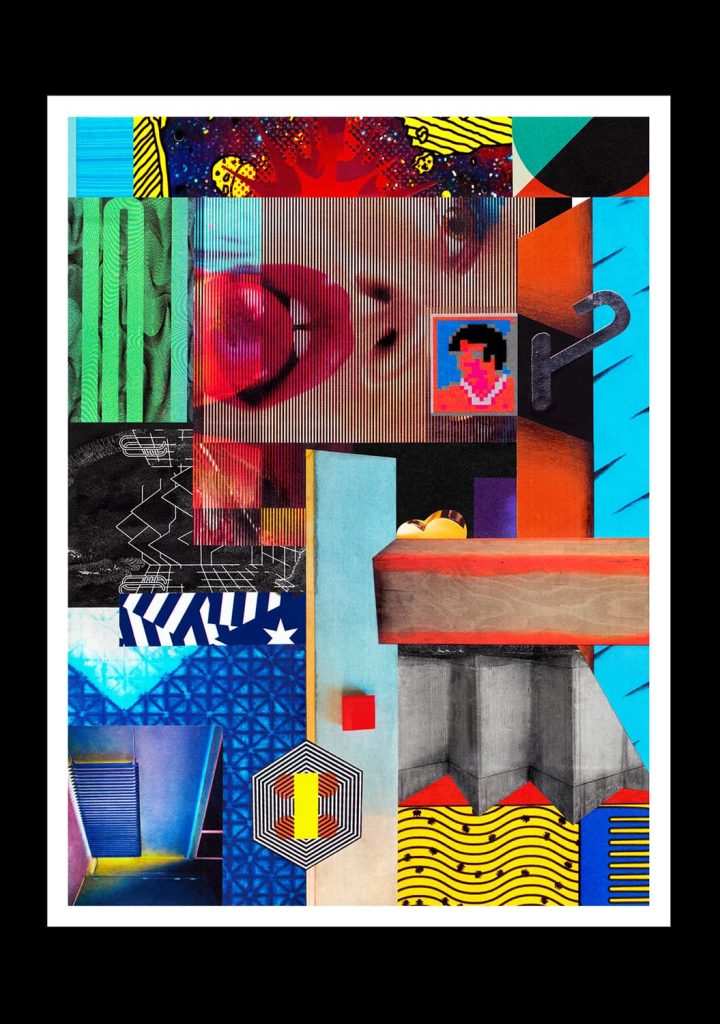
TWS – Your work is characterised by a unique blend of colours, textures and geometries. Can you describe your influences? Which artists, movements etc. had a big influence on your art?
K –First, of course, I am influenced by the work of other photographers. My profession entails being interested in many genres of photography. Through my studies I have learned a lot in this respect and made sure to always find new inspiration through magazines, art books and the internet. And a fundamental drive for me as a photographer is, of course, curiosity. The consumption of images has always been (life)important for me. The interest in images was practically laid in my cradle.
I can name Alec South and Roger Ballen as favourite photographers. I also really like photographers and works from the 1920s, 1930s and the 1940s. It was during this period that I think the best work in many artistic fields was produced.
So not only in photography, but also in art in general. Pablo Picasso, Fernand Léger, Max Beckmann, Otto Dix, Bauhaus, Surrealism, Expressionism… In painting, literature, architecture, cinema and photography, everything literally exploded and changed the world significantly. That’s why I find a lot of things from those times inspiring.
TWS –On your website your works are divided into three categories: Sculpture, Leaf and Mixed. Can you describe the individual series in more detail?
K –The categories “Sculpture” and “Leaf” each contain works that are similar in their construction. I always use pictures from old auction catalogues. I usually use pictures of porcelain, bronze or wooden figures as basic models. I paste these over and thus create a new sculpture.
It’s similar with the category “leaf”, except that I have a picture (some work of art or photo) as a template and usually paste many new elements over it. This sometimes results in pictures where it is not immediately clear which side is up or down. This is because I always simply turn collages over during the creation process and then incorporate images. The incorporated image is then a kind of counterpoint to what is already there. This works quite well with architectural cut-outs. Something better than the term “leaf” has simply not occurred to me so far. In the category there are always works that work well together as a hanging and form a small series. This is also the case with the sculptures, for example the four soldier works. But it is not the case that I plan a series in advance. It’s more the case that works are created over a longer period of time that then fit together quite well.
In the category “Mixed” there are actually only works that do not fit into the other two categories. The collages often stand alone. Actually, there is only one series in this category on the theme of “hell”.


TWS –What ideas underlie your abstract compositions? Which themes are present in your works?
K –The term “sculpture” already says from the name what the collage shows. It is very important to me that they are visually appealing. The original image of a sculpture, for example an old porcelain figure, usually looks old-fashioned and stale today. But combined with a modern photo or various modern elements, a new contrasting visual impression is created, which I like.
As I have already mentioned with the “leaves”, rotating the collage during its creation is an important stylistic device. By using architectural elements and geometric figures, I sometimes create the impression of three-dimensionality or depth when looking at the finished collage. Sometimes, however, it is just an orderly jumble that fits together well.
The collages from the “Mixed” section are sometimes more special. A recurring theme there is “hell”. In works like “Hell is empty, all the devils are here”, “The unhappiness of the greedy”, “The three judges of hell: Minos, Hades, and Rhadamanthus”, “The Lord of the Flies” or “Sodom and Gomorrah”, I deal with how different religions and cultures imagine what hell should look like.
Other works reflect a moment in my existence as a human being. For some years I have had a very painful back problem. States of mind, recurring pains or emotional states then often influence what I create for a collage, depending on the form of the day.
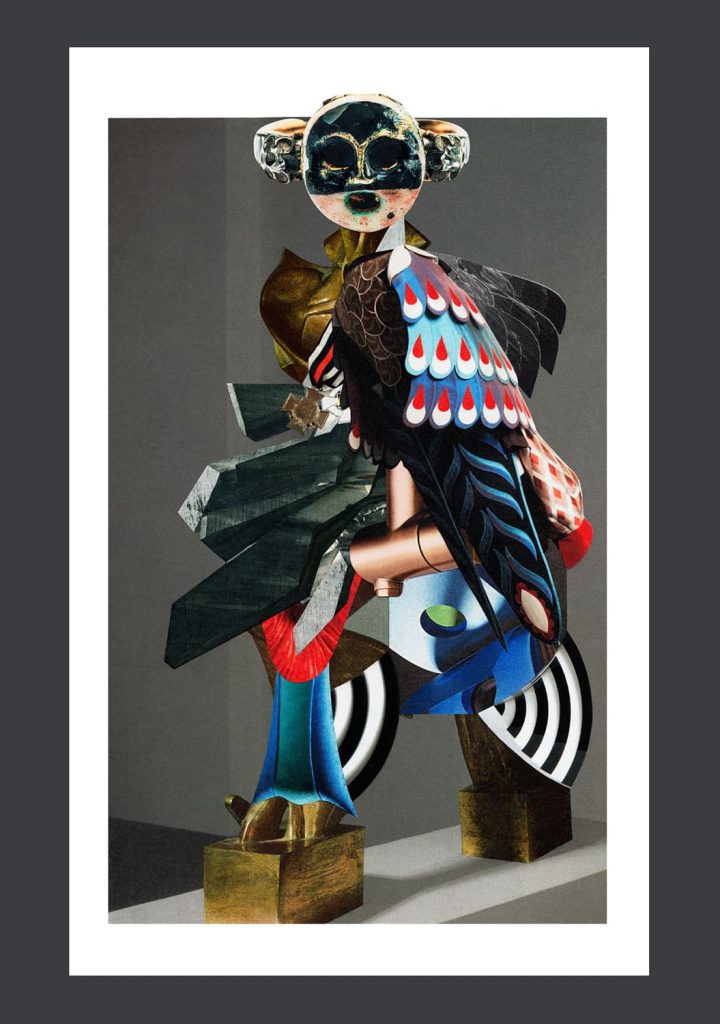
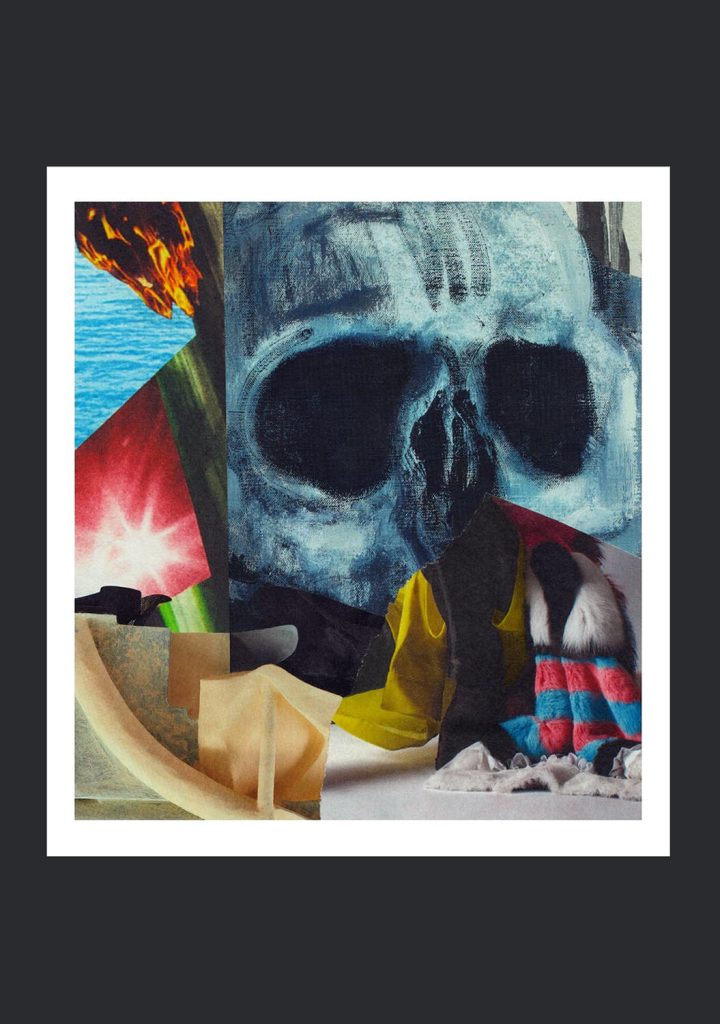
TWS –You seem to use a wide range of source materials from different periods. Can you tell us about the selection of materials you work with?
K –I really like to combine across all styles of time, art, eras, fashion and history. I understand the sampling of images like the sampling of music. I use a lot of motifs from auction catalogues. They offer and sell everything from ancient art to abstract modern art. An ideal treasure trove for me. But actually I use everything I can get my hands on. Today I cut out heating and stove pipes. I get samples of clothes from old fashion magazines, I cut out pictures from photo magazines and cut them up, old art or history books also serve as a source. Carpets always come in handy, too. What is important to me is either the shape, the colour, the pattern, or all of these together.
TWS –So you are a collector? Do you collect a lot of material?
K –To my chagrin… yes. Within two years I’ve managed to cram my little collage workroom so full that there’s barely room to walk. Magazines, books and storage boxes pile up around my work desk. Actually, I’m a very tidy person, but this room is quite a mess.
Of course it’s good to have a lot of work material, but at the same time it’s a curse because you quickly lose sight of certain things or ideas in the chaos.
There are days when I just cut and sort. On my table I always have many small piles of different materials. There are a few letters, there are a few geometric patterns, there are a few heads and so on. Then I usually pick something out quite quickly and start laying and doing puzzles.
At some point, however, the small piles are so big that you can’t really find anything anymore. Then I have to sort them out and a lot goes into small to medium-sized plastic boxes.
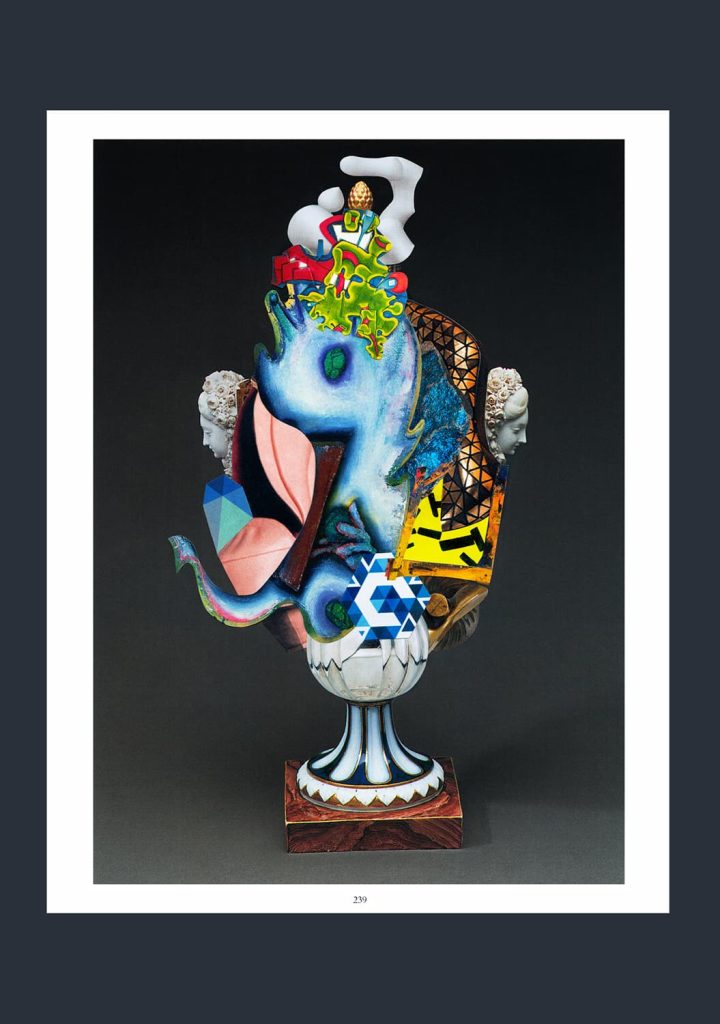
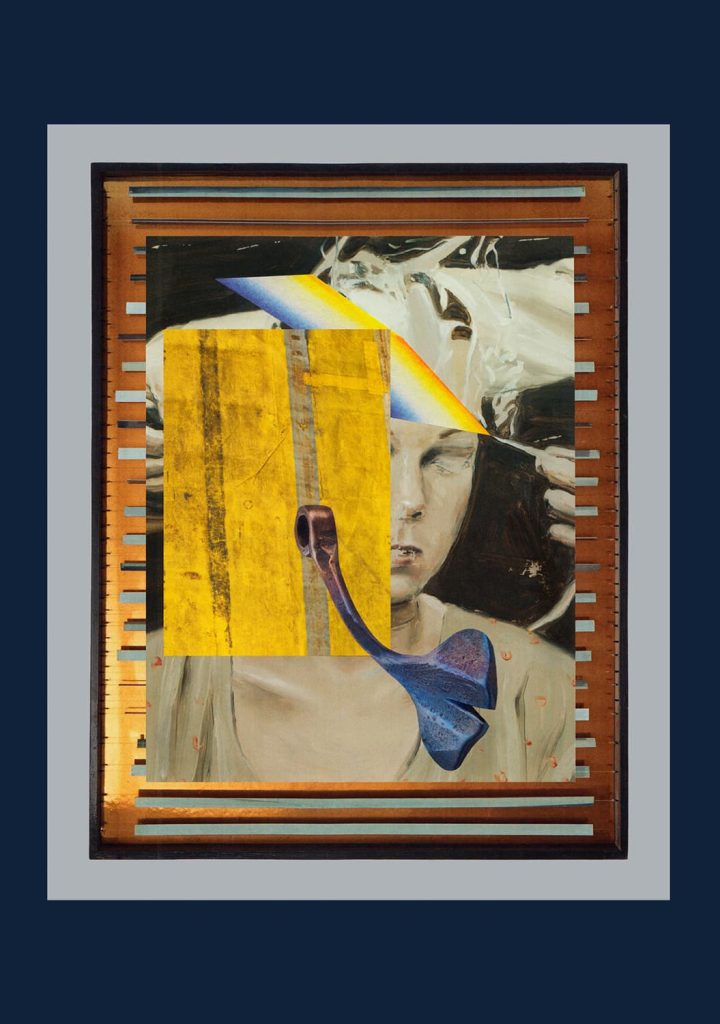
TWS –Until recently, Instagram was a powerful tool for artists to connect, build community and showcase their work. However, this has changed due to algorithmic changes. Have these changes affected you in any way? What other platforms do you use to showcase your work?
K –Yes, Instagram… a big issue. Of course it’s great to use a medium to present your work to the whole world. It was also a fine thing for my work as a photographer. I actually became aware of instagram very late. I posted my first pictures as a photographer in 2016 and at that time there was already a big outcry when the algorithm changed dramatically to the disadvantage of the members.
When I started my Kodaek account in 2020, everything was good at the beginning. Then, in the summer of 2022, I noticed that there was a sharp reduction in likes. Then again in November 2022. From then on, there were noticeably fewer likes and since then I have hardly received any new followers. Of course, that’s incredibly frustrating.
My aim is not to generate high numbers of likes. I could simply measure how many people saw my pictures by the number of likes.
Today, you get the impression that you are hardly noticed. And with the TikTok spirit moving to Instagram, I have the feeling that only less than half of the people can find and see my work. In my opinion, the takeover by the Meta Group has initiated the downfall of Instagram. Profit is in the foreground and everything is subordinated to that. Facebook is already unbearable, Instagram will certainly be soon. It’s about time for something new, but there is nothing visible on the horizon yet.
I wouldn’t mind if Instagram was split into two parts. Into a picture platform and a video platform. Then everyone can watch cat videos from morning to night without fear of negatively influencing the algorithm.
Another problem has been affecting me personally for almost half a year. I keep looking at different artists on Instagram for a long time and then I’m not stingy with giving them likes. In the last few months, whenever I posted a new photo, I always had the problem that the posted image did not show up under the given hashtags. Even under the hashtag “Kodaek_2020”, the new picture could not be found. Accordingly, the collage was only seen by my followers and otherwise not noticed. After some research on the internet, I found out that the algorithm seemed to punish me for giving too many likes. According to the internet, this process is called a “shadowban”. It’s crazy what they come up with to scare away their members.
In the course of this, I created an account on Behance, Pinterest and Facebook and posted a few pictures. Unfortunately, I don’t have the time to take care of three more platforms now.
For some time now, I have had my own website, where every collage is published almost simultaneously with Instagram. Of course, I can provide much more comprehensive information about my work there. In the not too distant future, I would like to set up a shop on my website and offer small print editions there. I also plan to publish a silkscreen edition.
TWS –How do you define the term “collage” for yourself?
K –Artistic freedom in dealing with images of all kinds. No conventions, no rules, everything is possible.
Find out more about Kodaek 2020 on his website or Instagram
